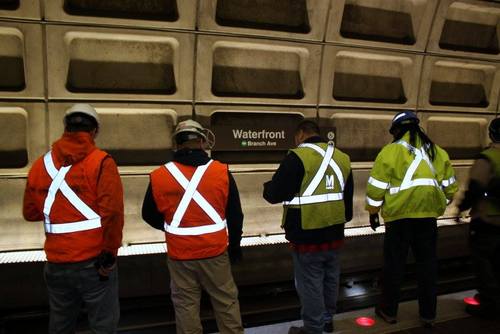Metro has a brilliant solution to its electrical problems
This article was posted as an April Fool’s joke.
In light of the day-long Metrorail shutdown that occurred on March 16th which uncovered major problems with power cables, WMATA is moving forward with a plan to allow the system to operate at partial capacity without electrical power.
Over the next three years, 200 Rider-Powered Rail Cars, or RPRCs, will be introduced into Metro’s rolling stock. The technology allows transit riders to push a train along the tracks with their feet using strategically-placed incisions in the floor of a rail car.
By running on nothing but the energy and sweat of their riders, WMATA can allow such cars to operate in all conditions, including future power cable inspections or even a system-wide blackout caused by a lack of funding.
WMATA General Manager Paul Wiedefeld said the project will help overcome what he’s called a “modern Stone Age family of maintenance problems.” The Federal Transit Administration has said the quality of many parts of Metro are most analogous to “a page right out of history.”

Artist’s rendering of the new RPRCs.
Modifying cars is simple and cheap
The first 86 RPRCs will come from retrofitted 1000-series railcars, which WMATA had been in the process of decommissioning before this decision was reached.
“The same elements that make the 1000-series ‘non crashworthy’ also make them perfect for turning into trains powered by people,” said WMATA spokesperson Hanna Barbera. Welders are already hard at work removing floor plates in front of the seats on 1000-series cars, he said, so that riders can scoot the train to their destination even while sitting and reading the news.
The remaining 114 RPRCs will need to be designed from the ground up as the first rider-powered heavy rail system. WMATA will begin a procurement process and expects bids from industry-leading companies such as Radio Flyer. Expected features include a metronomic drum beat broadcast over the speaker system that will better coordinate the pace of riders.
Public health stands to gain
Local leaders are hailing WMATA’s plan as a win for public health. “Requiring metro riders to push their own rail cars through the 117 miles of track will help make the Washington region a global model for cardiovascular health,” said Mayor Muriel Bowser of the decision, noting that widespread use of RPRCs in the Metro system might help DC regain the top spot as the fittest city in America.
Much of the cost of rebuilding the subfleet of cars will be covered through event sponsorships. The 2017 Rock N Roll Marathon will be held on Metro’s 26.2-mile long Orange Line tracks, eliminating complaints about closed roads and noisy outdoor concerts, while providing Metro’s electricians with a bonus workday to upgrade signals and switches.
Reports indicate that Metro General Manager Paul Wiedefield is currently in negotiations with SoulCycle to provide trainers throughout the Metrorail system as additional motivation to riders.
When asked for comment, WMATA Board chairman Jack Evans said, “Yabba dabba doo!”

